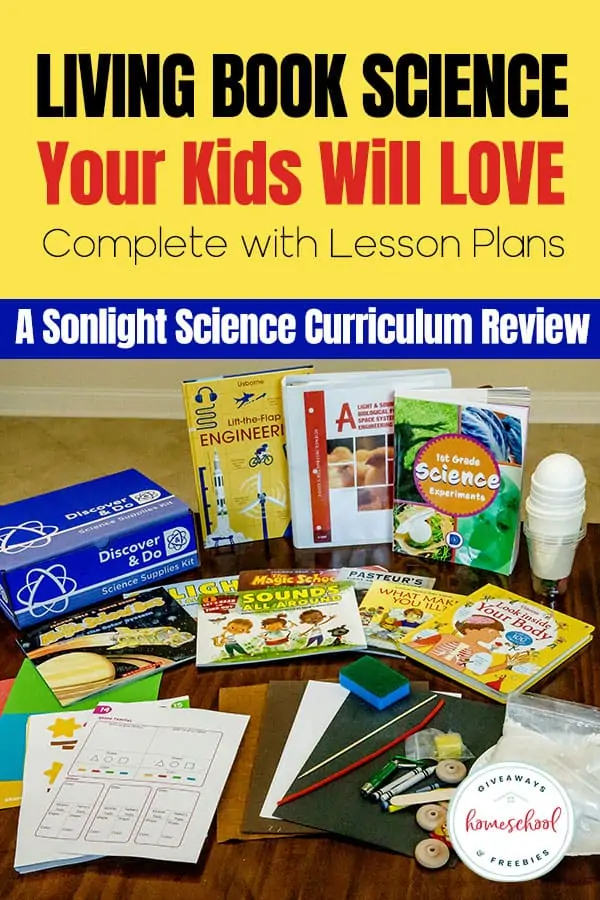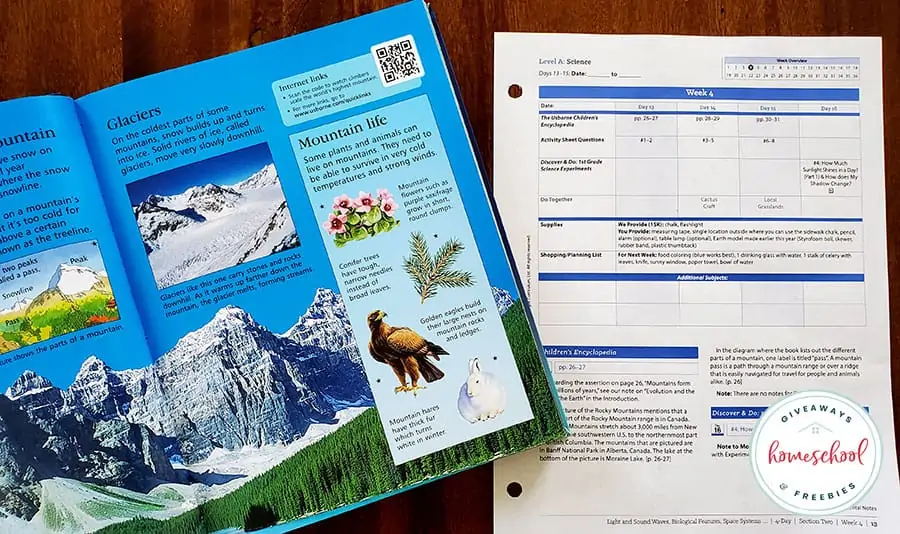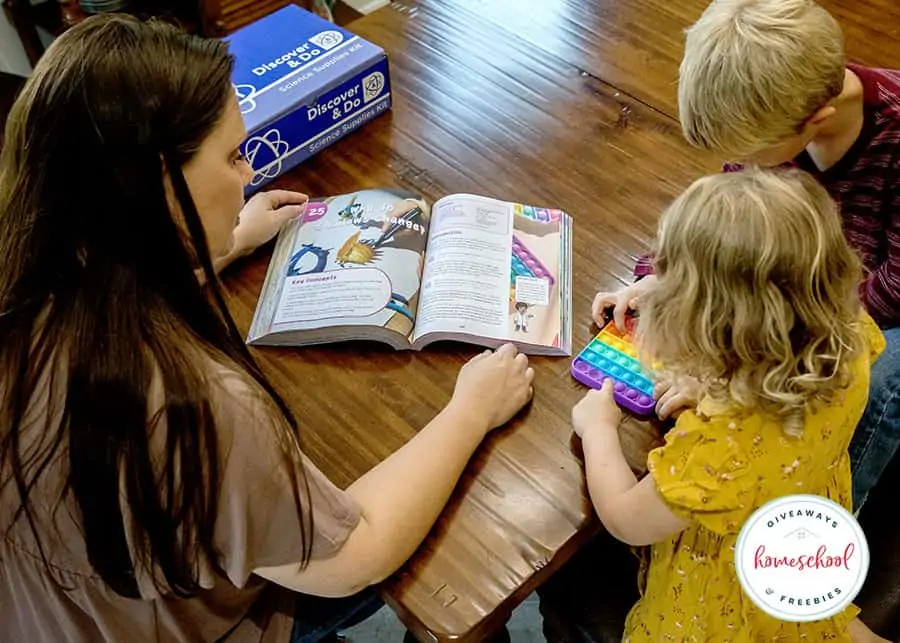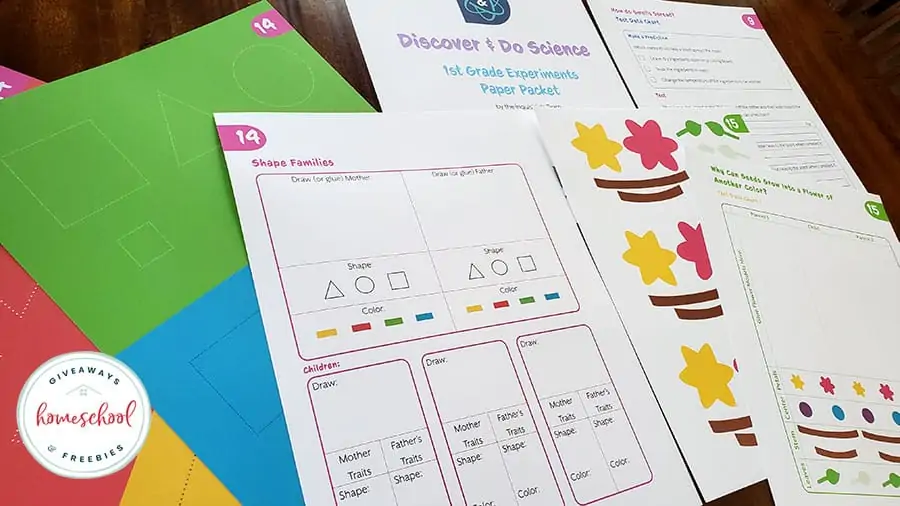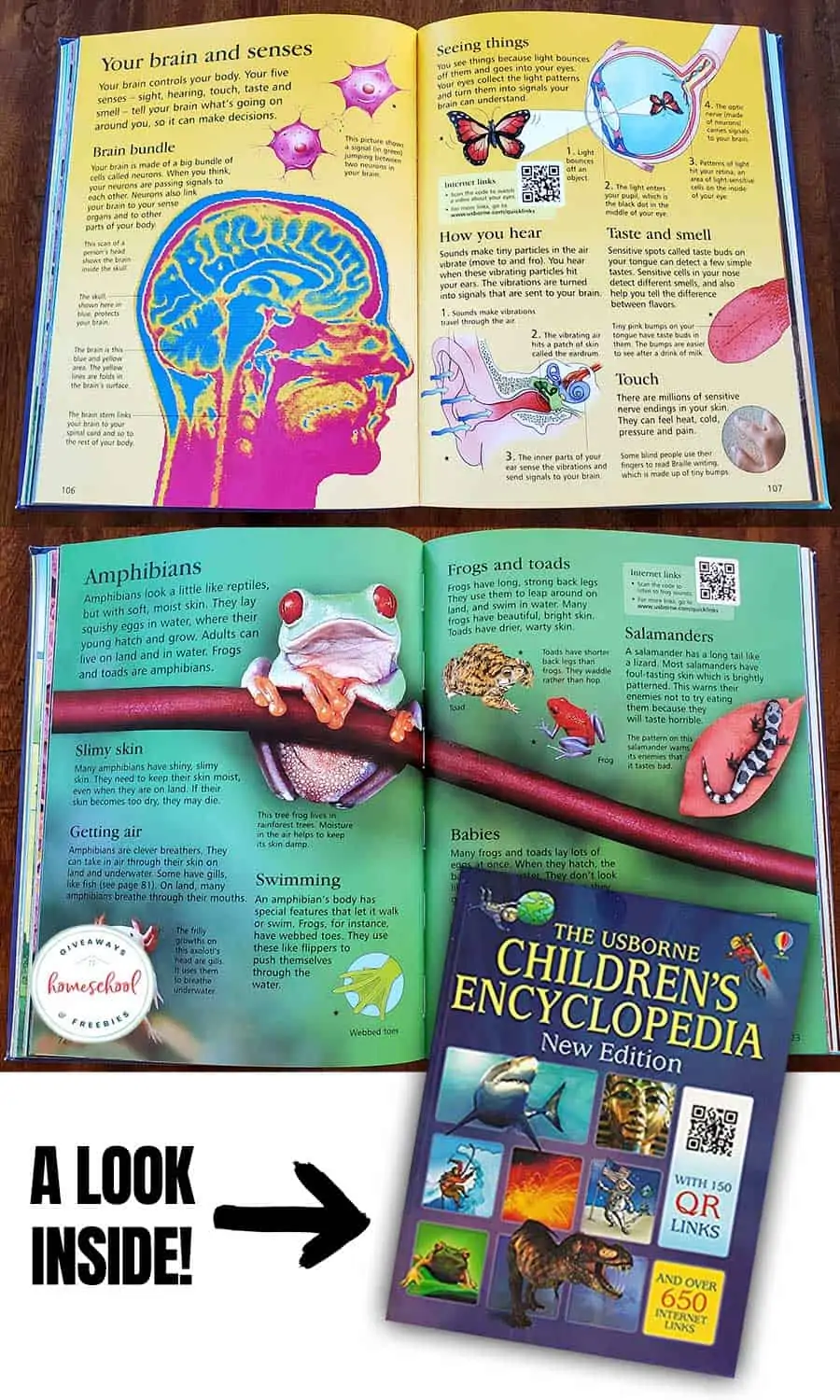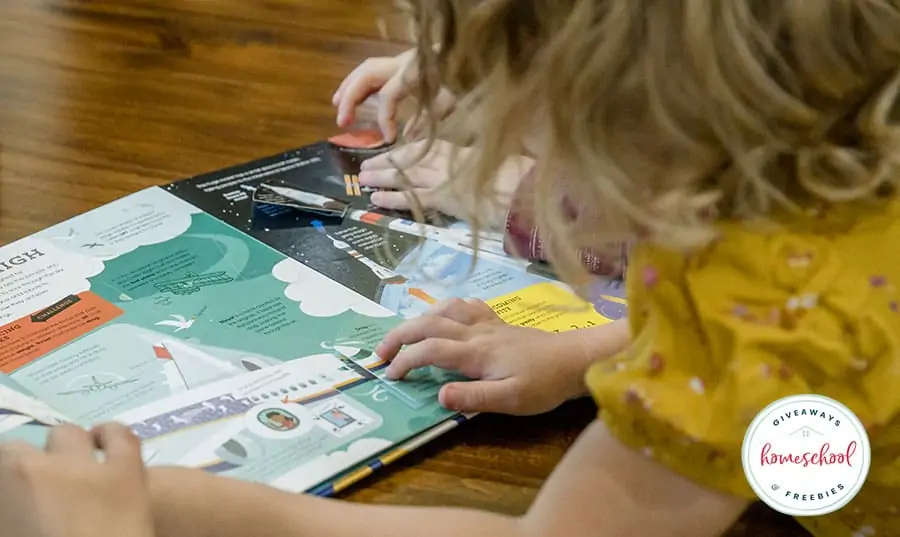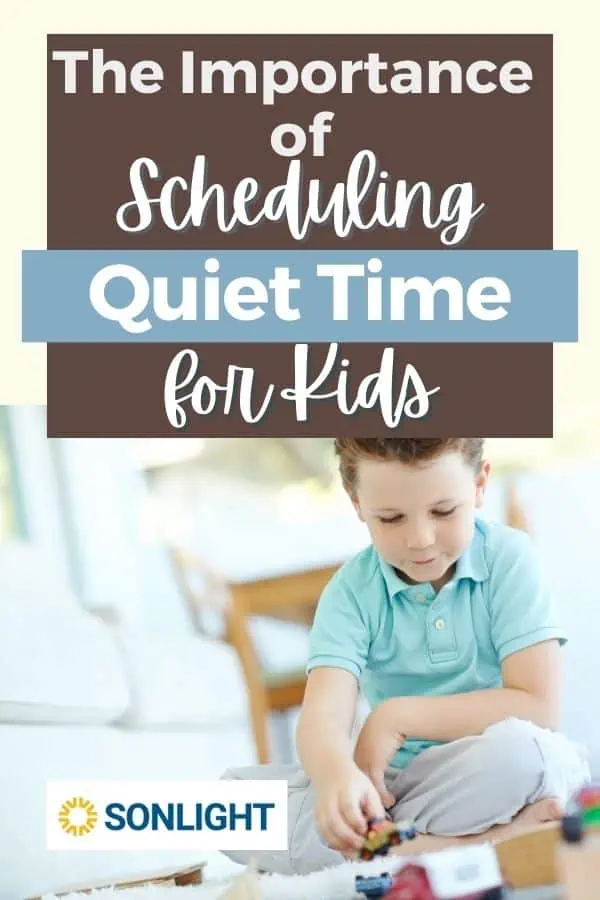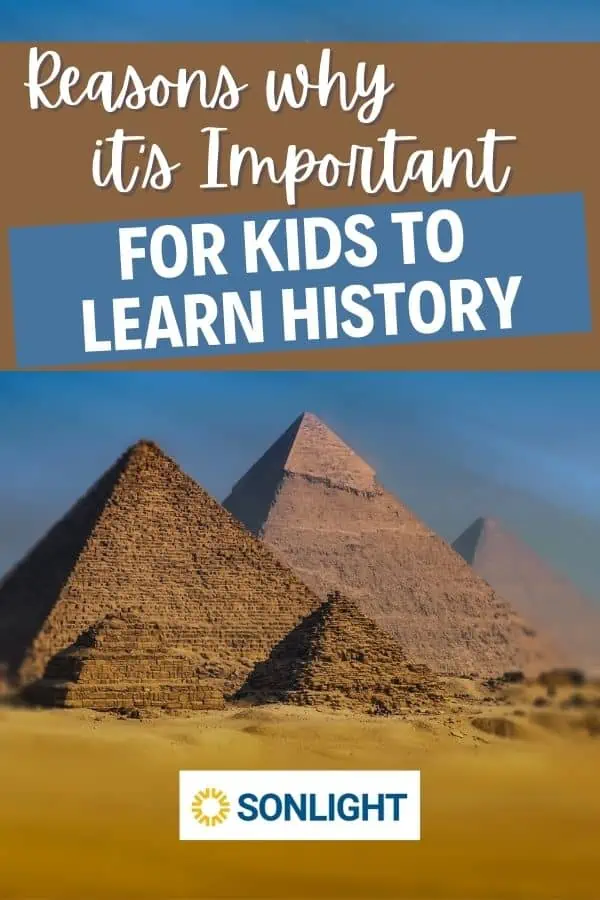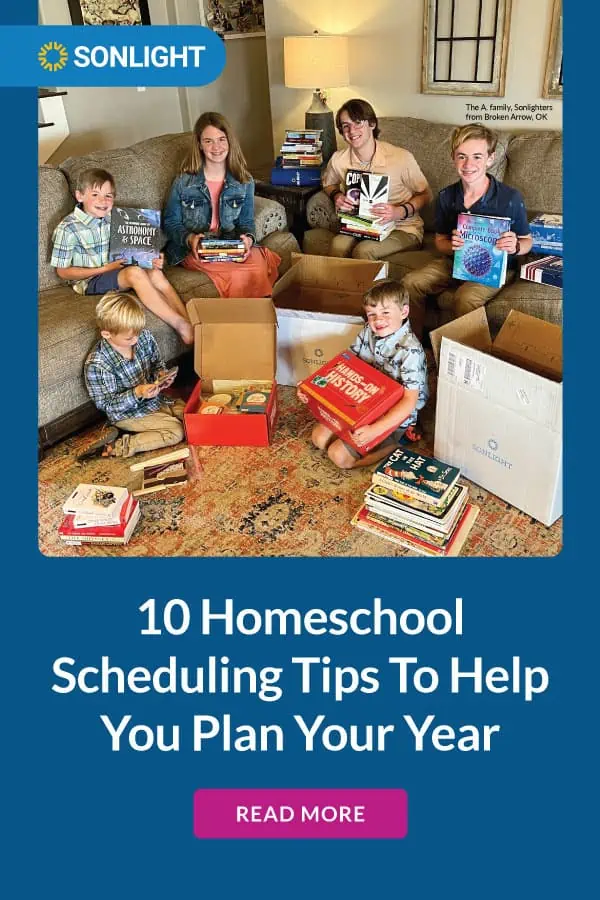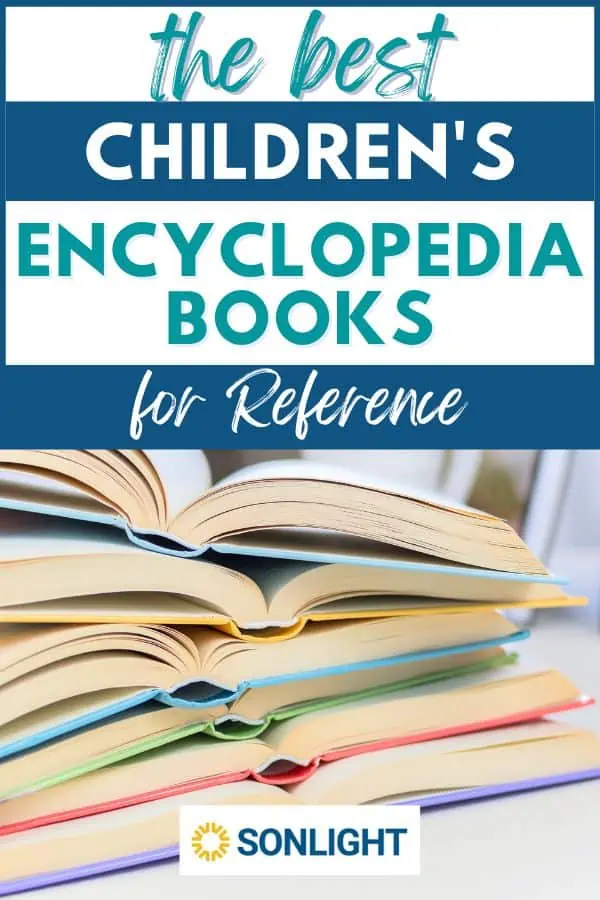Sonlight Science: Easy Living Book Science Complete with Lesson Plans
Published:
January 18, 2022

Contributor:
Carrie
Disclosure: This post may contain affiliate links, meaning if you decide to make a purchase via my links, I may earn a commission at no additional cost to you. See my disclosure for more info.
Are you looking for an easy living book science curriculum that will fascinate your children? Using Sonlight Science makes for a rich learning experience that encourages a love of good books.
Discover the different ways to squeeze all the fun science facts and information that you read from wonderful living books using ready-made lesson plans and activity sheets. Get cozy as we take a closer look at Sonlight science curriculum.
Disclaimer: I was provided with a free product in return for my honest review. I was financially compensated for my time. All thoughts and opinions expressed herein are my own and not influenced by the developing company and/or its affiliates in any way.
Have you struggled teaching science?
Many homeschool moms have two subjects that they are not as confident teaching – math and science. Many people struggle teaching math, so I get that, but why is teaching science so daunting? For me, it’s the hands-on activities and science experiments that I don’t care for.
I am NOT a science experiment-loving mom. If you feel that way, too, then you will be glad to know there’s a homeschool science curriculum that is all-inclusive and encourages independent experiments with video instructions and complete supply kits.
What is a living book?
A living book is one that has so much depth that it draws the reader in with vivid words and descriptions and causes you to really think about the story. Oftentimes the stories are relatable and allow imaginations to run wild.
Living books are great for true immersion into a topic of study. If you want to help your child develop a love of reading, incorporating literature-rich, living books is the best way to go about that.
What are living books examples?
A living book may be a biography, a classic, or even historical fiction. I enjoy teaching science using living books because it makes science come alive. Whether you read aloud to your children or they read independently, living books make for better stories and more retention of the material than a boring science textbook.
Easy Living Book Science Complete with Lesson Plans
Now that you know what a living book is, are you ready to explore an all-inclusive science curricula that you can use to teach science through living books?
Sonlight has been creating life-long learners for over 30 years. Their literature-rich living books curriculum covers multiple subjects: history, Bible, literature, language arts, geography, science, and more.
There are so many things to love about this Sonlight science program, but their carefully curated list of good literature is one of my favorite things, along with the Instructor’s Guides, which are the main components of their curriculum.
Your children will likely find the weekly experiments to be their favorite part, and you’ll be delighted that they use common household items that are included in the supply kit.
Lesson Plans & Prep-Work
It’s difficult to piece together your own living books curriculum without lesson plans and activity sheets (or worksheets of some sort), and that’s where Sonlight shines. They’ve done all the prep-work for you with their comprehensive Instructor’s Guide – you get to just open-and-go!
Is Sonlight a good curriculum?
You can use Sonlight all the way from preschool to high school. Their comprehensive curriculum is not just good, it’s amazing. Some would even say that it’s the best homeschool curriculum available.
Sonlight science follows the Next Generation Science Standards (NGSS), so you can be confident knowing that you are teaching your children all they need to know (and then some!).
Sonlight is a unique company in that they have the best return policy! As a homeschool mom, I understand the importance of finding the perfect curriculum on a budget. Sonlight offers an 18-week guarantee, so you can try out the Sonlight science package of your choice with confidence, knowing that if it’s not a good fit for your family, you can return it for a full refund.
Is Sonlight science secular?
Sonlight science curriculum is not a secular curriculum.
How many days per week is Sonlight science?
One of the great features about Sonlight science is the fact that you can select either a 4-day or a 5-day work week. Whichever you choose, you’ll spend an entire year using the curriculum.
It’s important to note that you will make your selection when purchasing, and the Instructor’s Guide you receive will reflect your option. A 4-day work week costs a bit less as there isn’t as much scheduled as a 5-day work week.
Sonlight Science for First Grade
When you are teaching science using a living book approach, it’s so much easier when it’s all planned out for you. This will ensure your child is learning the important information and facts from the books.
When you use Sonlight’s hands-on, standards-based science curriculum it’s all-inclusive, so you don’t have to plan anything!
The reading topics are all tied together, as well as the weekly experiments. This excellent literature-based curriculum is not only standards-based, but also includes a huge box of science supplies that are used for all of the experiments, making it easy for moms like me who aren’t as hands-on.
Read on as we break down what’s included in your homeschool science curriculum kit from Sonlight.
What does Sonlight Science A (for 1st grade) cover?
Science A is for ages 6-8 in the early elementary grades of 1-3. This means if you have multiple children near these ages/grades, you can essentially do science together.
Science A covers light and sound waves, biological features, space systems, and engineering design.
Sonlight Instructor’s Guide (IG)
Sonlight’s Instructor’s Guides are the key component to their living books curriculum. The Instructor’s Guides will help you stay organized and walk you through teaching the lessons. Since everything is laid out for you, all you do is open-and-go, which I love.
You can select a 4-day or 5-day lesson plan layout. We’ve always preferred 4-day curriculum to allow greater flexibility, but the choice is up to you.
The Instructor’s Guide is an invaluable tool that will help you squeeze all the educational content from the books that are included. There is so much more to it than just lessons plans, though.
Here’s a list of what you will find in the Instructor’s Guide:
Introduction & Overview
The introduction is helpful, especially if you are new to Sonlight. You’ll get an overview of what your student will be learning for the year – light, sound waves, biological features, space systems, and engineering.
The IG schedule is for a full 36-weeks and includes assignments, extra readings, simple activities, and additional notes, as well as an answer key. The ease of use of the IG makes homeschooling so much more enjoyable for the instructor.
Daily Schedule
Do you like to have your day planned out for you? Me too! I love how the schedule is laid out for you and tells you exactly what to do each day.
You can use the daily schedule sheets as your portfolio – just check off everything you complete. How easy is that?
Student Activity Sheets
The student activity sheets are basically worksheets that are scheduled throughout the lessons. They are colorful and use a nice-sized font. They are included in the IG in the order in which they are used, so as you work through the school year, it’s all in perfect order for you.
The worksheets are not overwhelming whatsoever, as students are often only instructed to answer a portion of the questions each day (as indicated on the IG). Having it all planned out is just another great feature that makes the Sonlight science curriculum so easy to use!
Science Supply Kit
Sonlight Science A includes a Science Supplies Kit. I cannot express how much I love the fact that everything is included, right down to the cotton balls and tweezers!
The Science Supplies Schedule is laid out for you in a chart that indicates which week(s) you are scheduled to use each item. This would be helpful if you like to plan ahead, but it would be just as easy to reach into your science kit and grab the supplies you need to as you go.
No more scrambling – you have everything you need for a complete experiment every time!
Discover & Do: 1st Grade Science Experiments
This is a great book, and that that says a lot coming from a homeschool mom who hates science experiments. This book is laid out in an easy-to-follow format that takes the intimidation out of science experiments.
Discover & Do: 1st Grade Science Experiments includes 36 experiments that directly reinforce the material that is learned. Each experiment covers a key concept with easy, step-by-step instructions that make it doable for even those who are not necessarily as hands-on as others (this mom is raising her hand!).
Since the Science Supplies Kit includes everything you need, there’s no stress related to supply gathering. There are even neat things you can include that you may have at home.
For example, the schedule for week 25 has included a fun science experiment on shadows called “Why Do Shadows Change?” and shows a colorful pop-it fidget. Since we had that at home, we grabbed it, and it was a big hit. Now, these are the types of hands-on activities that this mom enjoys!
Discover & Do: 1st Grade Science Experiment Videos
If the thought of doing science experiments gives you hives (is that just me?), then you will totally appreciate the science experiment videos that can be watched with online access.
Each of the 36 science experiments in Discover & Do: 1st Grade Science Experiments includes a corresponding video that you can watch that shows you step-by-step how to complete the experiment in your home.
What I like MOST about these videos is that they are so easy to understand and observe that your child can complete the experiment on his or her own by just watching the videos.
You can watch a science experiment video to get a better idea of what to expect.
Discover & Do: 1st Grade Science Supplies Kit
No more running around looking for paper clips, rubber bands, or straws – the Science Supplies Kit is all-inclusive! How many times have you tried to conduct a simple science experiment, but you were missing something random? Well, no more worries about that.
The Science Supplies Kit includes the quantities you need for each of the 36 science experiments. As mentioned above, there is a handy schedule of science supplies included in the Instructor’s Guide that indicates what week(s) each supply item is used.
Discover & Do: 1st Grade Experiments Paper Packet
These colorful, consumable worksheets are printed on heavy-duty cardstock and will be used with each science experiment. They make recording data and charting results fun for kids. If you have more than one student, you should purchase an extra packet.
The Usborne Children’s Encyclopedia
The spine of this first grade science curriculum is The Usborne Children’s Encyclopedia. I am sure this book will be a favorite go-to during your elementary science years as it is a great book filled with colorful illustrations and tons of fun science facts.
There are so many fascinating facts on our world, animals and plants, the human body, history, cultures, inventions, space, and even geography! Suffice it to say that it covers a lot more than just this one level of science.
I am going to show you some of the pages so you can see how beautiful it is. I had a difficult time taking pictures because the QR codes kept taking me to websites, which is one of the BEST features of this great resource. Learning about baby elephants? Scan the QR code and watch baby elephants play. Every section has a QR code that takes you to relevant information about the specific topic of study.
Sonlight Curriculum Book List
What makes Sonlight so special is all the carefully curated books that it exposes your children to, full of fun scientific content. They include captivating information that reinforces what is learned from the daily lessons and science experiments.
View the booklist that is included in Science A: Light and Sound Waves, Biological Features, Space Systems, and Engineering Design.
Final Thoughts
- Sonlight Science A is perfect for 6-8 year old children who are in grades 1-3.
- You can select a 4 or 5-day Instructor Guide.
- Most (if not all) hands-on experiments and activities are easy enough for your child to do independently after watching the instructional video.
- The book selections are great; your kids will love them!
- The science supplies kit includes everything you need for all activities.
I highly recommend Sonlight Science Programs if you are searching for a curriculum that makes science come alive for your kids and helps you to actually complete the experiments by including everything you need.
Are you ready for your best homeschool year ever? Who knows, maybe science will become your favorite subject!

